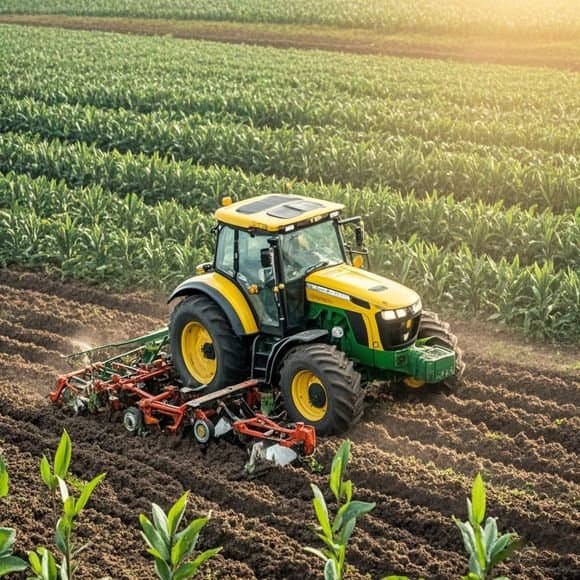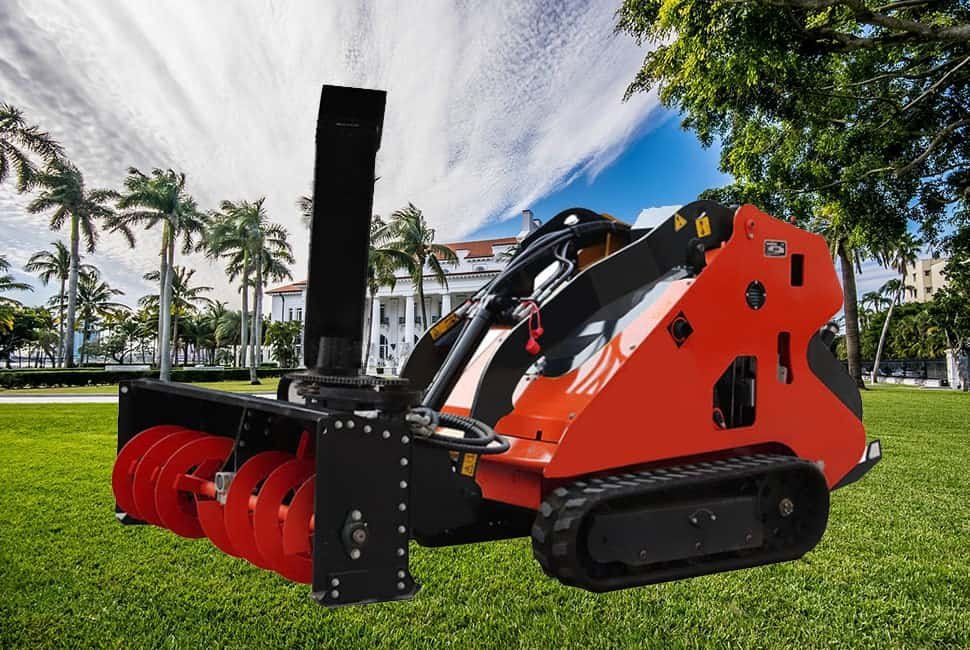If you’re not careful, buying a new tractor is a purchase decision that can be extremely overwhelming. There are so many choices and without someone to properly guide you, it is easy to spend a lot of money and end up with the wrong tractor. This guide will help simplify the process and make sure that you make an informed decision.
Choosing the right tractor involves understanding your specific needs, budget, and features. This comprehensive guide covers essential factors to consider when buying a new tractor, helping you find the perfect fit.Let’s explore the key aspects of selecting a new tractor.
Determine the Tractor’s Intended Use
To select the right tractor, figure out what the tractor will primarily do.Are you plowing with it, tilling your garden, or using it to move stuff around?Different applications require different things from the tractor.
Knowing what you want to do with your tractor will lead you to the right tractor for you.Do you need a tractor for farming, for lawn and garden work, or for heavy-duty work? Knowing what you need a tractor for will guide you in the right direction.
Common uses for tractors include agricultural, construction, and landscaping. However, each application could require a different horsepower, a different size, and different attachment options.
Consider Horsepower and Engine Capacity
Horsepower determines whether a tractor is capable of handling a particular task or being cost-effective. Assess your needs, and decide what range of horsepower you need.Selecting the right horsepower for your tractor allows you to meet the needs of your farm or property efficiently. If you don’t have enough
power, you can’t get the job done. If you have too much power, you’ve over-bought and have wasted money.A compact tractor with 25-50 HP may suffice for smaller farms, while larger operations might require 100 hp or more for heavy-duty tasks.
Evaluate the Tractor’s Fuel Efficiency
Fuel efficiency can mean huge savings in terms of operational costs.Identify the models known for their fuel economy.Buy a tractor that balances power and fuel efficiency to keep your longterm costs down. If you’re inefficient from a horsepower standpoint, then you’re throwing money away. If you’re inefficient from a fuel standpoint, then you’re not being a good steward of the environment, either.Look for tractors with a modern engine designed to be fuel efficient and have lower emissions. This is becoming more important as we try to be better stewards of our natural resources and reduce our carbon footprints.
Check the Tractor’s Hydraulics and Transmission System
Hydraulics are needed to operate the attachments.Pay attention to the type of transmission in the tractor and make sure it fits your needs and is easy to use. Here is a tip. A great hydraulic system makes a tractor more versatile. It will manipulate attachments and enable the tractor to do things that much more efficiently, whatever that might be for you.Verify that the transmission and the way you operate the tractor work for you and that they fit your needs and are easy for you to use. Regardless of the feature or the type (hydro or gear), if it doesn’t work the way you expect or are comfortable with, the tractor isn’t going to be what you want.Hydraulic capabilities can be all over the map, depending on the type and size of the attachments you’re going to be running. The largest attachment you plan to operate will determine the type and capacity of the hydraulic system you need.
Inspect the Tractor’s Tires and Traction
The type of tire you put on the tractor impacts traction, stability, and overall operation. Different tire designs work better on different terrains.Proper tire selection is essential for making sure you have traction and can operate efficiently on your property. Assess your situation and make sure you get the right tire for your tractor.A tire that works great out in the mud may not be the best tire if you’re spending most of your time on hard, dry ground, and vice versa. You need to think through your primary work area and what type of tire will work best in that specific environment.
Review the Tractor’s Maintenance and Repair Costs
You need to understand what you’re getting into with the ongoing maintenance of a new tractor.Research the common items that need maintenance and how much they cost. If you own a new car, it needs an oil change every 5000 miles or 6 months, or the car starts breaking down. A new tractor isn’t much different, just on a different scale.The maintenance costs of a tractor can be a huge factor when deciding which tractor to buy. If you buy a tractor known for expensive maintenance, plan on spending a lot of money to keep it running. I mean a lot.
Look for a tractor known for being reliable and straightforward to service. A great way to control tractor costs is to minimize the amount of money you’re constantly throwing at it. Here comes my favorite word again, right? Maintenance! Maintenance will keep your tractor running longer. That way, you don’t ever have to shell out $500k!

Understand the Resale Value and Depreciation
The possible resale value of a tractor can make a significant difference in the return on your investment. Research different tractors and their resale values. Buy a tractor that has a good resale value to maximize your overall investment. Understand the depreciation on a tractor to make an economically wise decision.
Typically, big-name, reputable tractors hold their value better than the off-name, cheaper version of your tractor.
Research Manufacturer Reputation and Warranty
A manufacturer’s reputation often indicates the quality of its products.Look for a warranty that puts your mind at ease.When you’re choosing the manufacturer, and you’re looking to make a decision based on warranty, think about a couple of things.First, does it have a good warranty? If so, then on the front end, when you’re making your decision, that should give you a little peace of mind.But let’s not buy something that has to have a terrific warranty because it’s going to be breaking all the time.Do some research and find out what other people are saying about the tractor and its performance. Do they have good customer reviews? What kind of options do they provide for support after the sale?A good tractor warranty doesn’t mean your tractor is going to break down.
Ensure Compatibility with Attachments and Implements
Make sure the tractor can operate the implements you’re looking to run on it, so it won’t be a one-trick pony. Being able to run implements on the tractor makes it versatile and helps make you more efficient. Don’t invest in a tractor that can only do one thing. Can this tractor use the attachments necessary to do the work you need it to do? This factor is vital to help ensure you get the most return on your tractor investment.Attachments could be a plow, a harrow, or a loader. Make sure you can run these pieces of equipment on your new tractor.
Test Drive and Check for Comfort and Usability
Before you pull the trigger and buy the tractor, have you gone out and driven it yet? Look at the visibility and controls. Are the controls straightforward and easy for you to use? How about the comfort and the usability of the tractor? These factors are going to have a significant impact on your overall satisfaction.
Spend some time in the cab of the tractor to judge visibility, comfort,and ease of use. How transparent is it? Are the controls easily accessible?
Will you be able to be efficient with it? Do you know how to cram more words on the page? Spend some time in the tractor to figure out visibility, comfort, and the controls.
Краткое содержание

WhatsApp For More Detailed Information +86 19315780097


